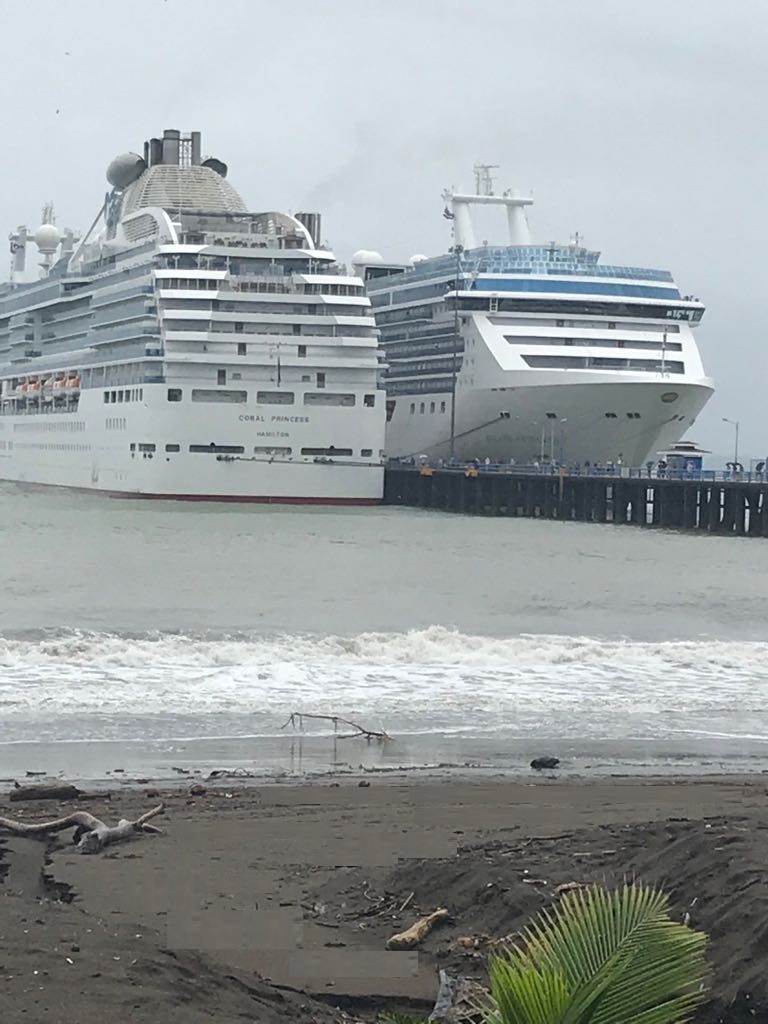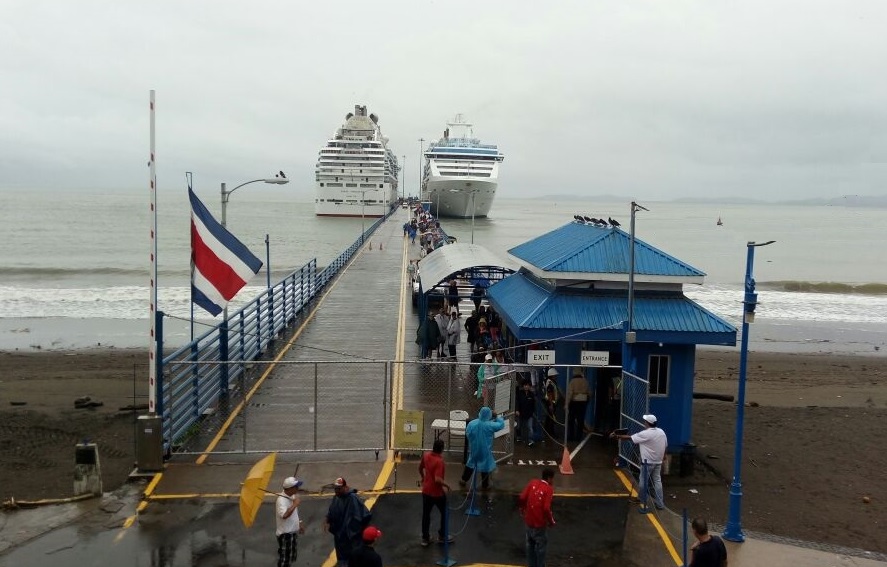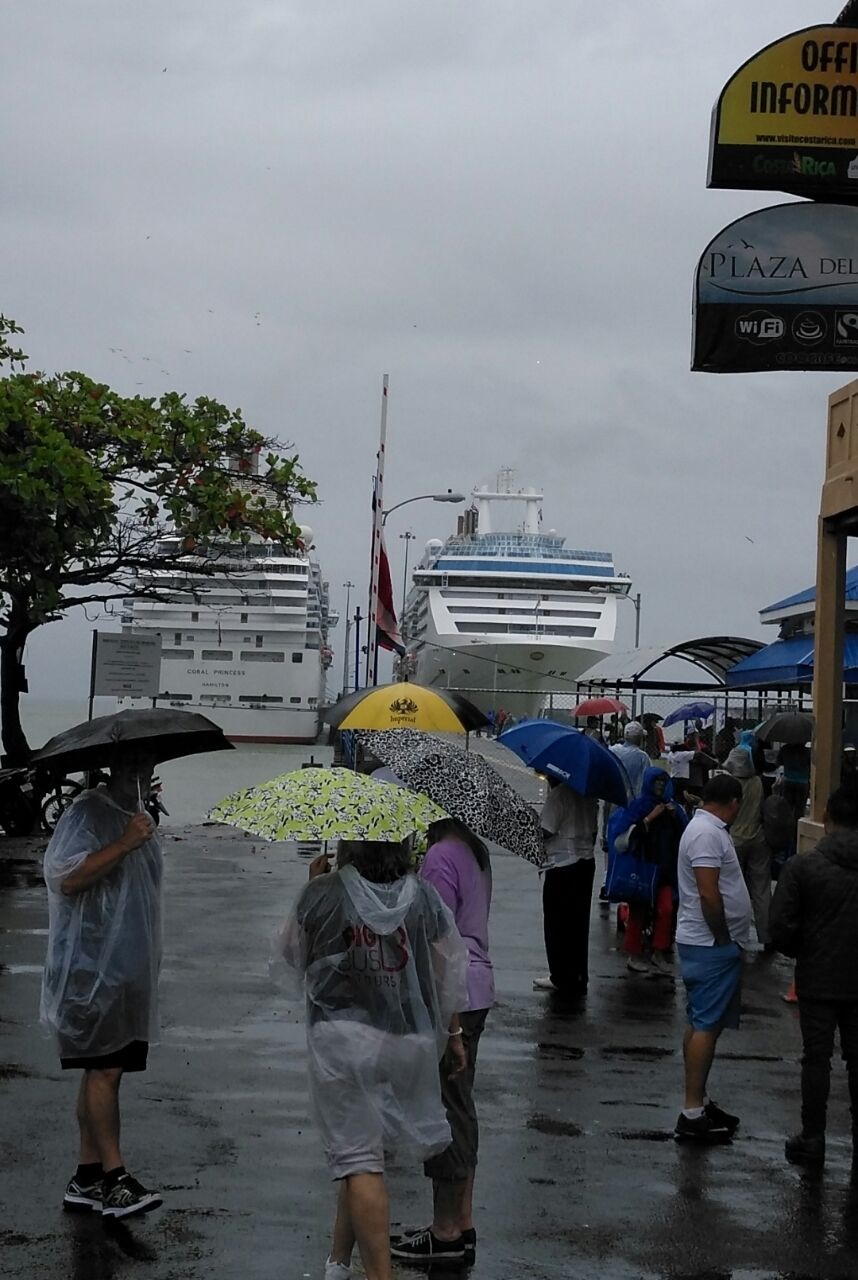Costa Rica is located in a region of the world where storms and hurricanes are frequent during a part of the year, and although the affections are not usually as strong as in the Caribbean islands or in Florida (USA), more resources must be invested in addressing the emergencies that cause these phenomena each year.
Given this situation, the country has been prepared with an efficient system of social and institutional organization for the attention of emergencies, and under scientific criteria, has identified the places of greatest vulnerability to climate change.
The city of Puntarenas, by its geographic characteristics, is indicated as one of the places of risk, before the effects of the climatic change (in particular, the rise of the level of the sea), since it is a strip of land of only four meters high that is densely populated.
The increase in sea level is not only due to climate change or global warming, but also to the phenomenon of El Niño and by wave stacking (due to distant storms), these being the reasons that affect more frequently.
In early October of this year 2017, Storm Nate indirectly hit Costa Rica, significantly affecting public infrastructure (bridges and roads), and agricultural production; among others.
On October 4, when Storm Nate was moving slowly in front of the country, two cruisers arrived at the tourist port of Puntarenas: Coral Princess and Island Princess, both from Princess Cruises Co.
Cruises in the tourist port of Puntarenas. (Photo: Rodolfo Mata, OPIB of Muelle de Puntarenas)
Everything was planned to be a normal day of activities. In San José (the capital city), tour operators departed that morning, with the aim of welcoming tourists and offering them a pleasant experience in national parks, or canopy, rafting, thermal, cable car, coffee tour, museums and more; however, failed to reach their destination because they found the roads blocked by landslides caused by heavy rains.
By six o’clock that day, the cancellations of these services had already been confirmed, and a “plan B” had not been prepared, which caused that, a little later, hundreds of tourists would get off the cruises and walk without orientation by the Puntarenas city. Certainly, this was a big surprise for the small local merchants, especially for informal sellers who achieved impressive sales records that morning.
Tourists coming to the city with cruises. (Photo: Rodolfo Mata, OPIB of Muelle de Puntarenas)
This particular situation led to reflection on two aspects. First, Nate storm made clear that although Costa Rica is a country with very good standards in tourist services, the concentration of these is not precisely in local hands, so it is asked: What happens in Puntarenas with business ventures? This city and its surroundings have a great number of tourist attractions: natural, archaeological, cultural and adventure tourism; many well developed as a tourist product and others in the process of being discovered.
On the other hand, in broader terms, it is observed that the cruise industry and the effects of climate change are growing every year, and probably the phenomenon seen recently with the storm Nate, will continue to be repeated in the future.
Given this scenario, it is important that at the local level, the Port Authority, local governments, tourist associations and universities work in the planning of natural hazards management, in order to prevent and mitigate their effects, so that the sustainability of this industry can be guaranteed as far as possible.
You can imagine the surprise of both groups on the first aspect. On the one hand, tourists visiting an empty city, and on the other hand, a small group of subsistence traders placing their products in percentages of sales between 800 and 2000 percent above ordinary.
Cruise passengers in the city of Puntarenas. (Photo: Rodolfo Mata, OPIB of Muelle de Puntarenas)
It is important to promote small local industry, particularly when there is significant potential for it, and what is lacking is nothing more than technical training and seed capital. In this sense, I would like to point out that the Costa Rican Institute of Ports of the Pacific (INCOP) has for several years invested in tourist infrastructure that strengthens the urban tissue of the city and favors the development of recreational and recreational activities. In addition, it recently incorporated in its project portfolio some initiatives that promote the development of tourist circuits, with the participation of local entrepreneurs and the Morista Academy of Costa Rica (non-profit organization, which rescues the history of the national hero and former president of Costa Rica, Juan Rafael Mora Porras). This initiative is part of the strategies that are being promoted to strengthen port-city relations, which are expected to have positive effects for the cruise industry into the dynamic and diversification of the local economy.
In the second aspect, it is important to take into account the conclusions reached by some scientific research on the future of Puntarenas by the year 2100, which indicate an increase in sea level, which would cause changes in the coastline and decrease of drinking water. In addition, a significant increase of the temperature of between 3 and 6 degrees C, and a rains increase of + 23%. The picture does not seem very optimistic, but it is something that almost all the coastal cities of the world now share.
Faced with such a scenario, there is no doubt that planning must be coordinated between government and industry, to achieve a process of adaptation and mitigation, as convenient as possible. In addition, in this case, we must take advantage of the cooperation agreement signed earlier this year between Costa Rica and the Netherlands, with which we could facilitate technology transfer, which provides the tools to face such challenges.
Head Image: The city of Puntarenas and the cruises terminal. (Photo: Rodolfo Mata, OPIB of Muelle de Puntarenas)
Puntarenas: Cruceros e impactos locales de la tormenta Nate
Costa Rica se ubica en una región del mundo donde las tormentas y los huracanes son frecuentes durante una parte del año, y aunque las afectaciones no suelen ser tan fuertes, como si ocurre en las islas del Caribe o en Florida (USA), cada año debe invertirse más recursos en atender las emergencias que provocan estos fenómenos.
Dada esa situación, el país se ha preparado con un eficiente sistema de organización social e institucional para la atención de emergencias y, bajo criterios científicos, tiene identificados los lugares de mayor vulnerabilidad ante el cambio climático.
La ciudad de Puntarenas, por sus características geográficas, está señalada como uno de los lugares de riesgo, ante los efectos del cambio climático (en particular, ante el aumento del nivel del mar), pues se trata de una franja de tierra de solo cuatro metros de altura que está densamente poblada.
El aumento en el nivel del mar no se da solo por el cambio climático o calentamiento global, sino también por el fenómeno del Niño y por apilamiento de oleaje (debido a tormentas lejanas), siendo estas las razones que afectan con mayor frecuencia.
A inicios de octubre de este año 2017, la tormenta Nate golpeó indirectamente a Costa Rica, afectando de manera significativa, la infraestructura pública (puentes y carreteras), y la producción agrícola; entre otros.
El 4 de octubre pasado, cuando la tormenta Nate se estacionó frente al país, llegaron dos cruceros al puerto turístico de Puntarenas. Estos fueron el Coral Princess y el Island Princess, ambos de la compañia Princess Cruisess.
Cruceros al puerto turístico de Puntarenas. (Foto: Rodolfo Mata, OPIB del Muelle de Puntarenas)
Todo estaba previsto para que fuera un día normal de actividades. En San José (la ciudad capital), los tour operadores salieron esa madrugada, con el objetivo de recibir a los turistas y ofrecerles una agradable experiencia en los parque nacionales, o en actividades de canopi, rafting, termales, teleférico, coffee tour, museos y más; sin embargo, no lograron llegar a su destino debido a que encontraron las carreteras bloqueadas por derrumbes o deslizamientos de tierra provocados por las fuertes lluvias.
A las seis de la mañana de ese día, ya se habían confirmado las cancelaciones de dichos servicios, y no se tenía preparado un “plan B”, lo que provocó que poco más tarde, cientos de turistas bajaran de los cruceros y caminaran sin orientación por la ciudad puntarenense. Sin duda, esto fue una gran sorpresa para los pequeños comerciantes locales, especialmente para vendedores informales que esa mañana alcanzaron impresionantes records de ventas.
Turistas que llegan a la ciudad con cruceros. (Foto: Rodolfo Mata, OPIB del Muelle de Puntarenas)
Esta situación tan particular, indujo a la reflexión sobre dos aspectos. Primero, Nate puso en evidencia que aunque Costa Rica es un país con muy buenos estándares en servicios turísticos, la concentración de éstos no está precisamente en manos locales, por lo que se pregunta: ¿Qué ocurre en Puntarenas con los emprendimientos de negocio? Esta ciudad y sus alrededores cuentan con una gran cantidad de atractivos turísticos: naturales, arqueológicos, culturales y de aventura; muchos bien desarrollados como producto turístico, y otros en vías de descubrirse.
Por otra parte, en términos más amplios, se observa que la industria de cruceros y los efectos del cambio climático crecen cada año, y probablemente el fenómeno visto recientemente con la tormenta Nate, se seguirá repitiendo en el futuro.
Ante ese escenario, es importante que a nivel local, la Autoridad Portuaria, los gobiernos locales, los gremios turísticos y las universidades trabajen en la planificación del manejo de amenazas naturales, con el fin de prevenir y mitigar sus efectos, para que en la medida de lo posible se pueda garantizar la sostenibilidad de esta industria.
Sobre el primer punto, puede imaginarse la sorpresa de ambos grupos. Por una parte, los turistas encontrando un puerto y una ciudad vacía, y por otra, un pequeño grupo de comerciantes a escala de subsistencia colocando sus productos en porcentajes de ventas de entre el 800 y el 2000 por ciento arriba de lo ordinario.
Pasajeros de cruceros en la ciudad de Puntarenas. (Foto: Rodolfo Mata, OPIB del Muelle de Puntarenas)
Es importante promover la pequeña industria local, particularmente cuando se cuenta con el potencial para ello, y lo que falta no es más que formación empresarial a nivel técnico y capital semilla. En este sentido me gustaría hacer notar que el Instituto Costarricense de Puertos del Pacífico – INCOP, desde hace varios años realiza inversiones en infraestructura turística que fortalece el tejido urbano de la ciudad y favorece el desarrollo de actividades recreativas y de esparcimiento. Además, recientemente incorporó en su cartera de proyectos algunas iniciativas que promueven el desarrollo de circuitos turísticos, con la participación de empresarios locales y la Academia Morista de Costa Rica (organización sin fines de lucro, que rescata la historia del héroe nacional y expresidente de Costa Rica, Juan Rafael Mora Porras). Esta iniciativa es parte de las estrategias que se impulsan para fortalecer las relaciones puerto ciudad, y que se espera que tenga efectos positivos para la industria de cruceros y la dinamización y diversificación de la economía local.
En el segundo aspecto observado, es importante tomar en consideración las conclusiones a las que han llegado algunas investigaciones científicas sobre el futuro de Puntarenas para el año 2100, en las que se señala un aumento en el nivel del mar, que provocaría cambios en la línea costera y disminución del agua potable. Además, un importante aumento de la temperatura de entre 3 y 6 grados C, y un aumento de las lluvias de +23%. El panorama no parece muy optimista, pero es algo que en este momento comparten casi todas las ciudades costeras del mundo.
Ante dicho panorama, corresponde planificar y coordinar entre Gobierno, Autoridades Portuarias, academia e industrias. Además, en este caso, se debe aprovechar el Convenio de cooperación firmado a inicios del presente año entre Costa Rica y Holanda, con el que podríamos facilitar la transferencia tecnológica, en el que se aportan las herramientas para enfrentar los retos venideros.
Head Image: La ciudad de Puntarenas y el muelle de cruceros. (Foto: Rodolfo Mata, OPIB del Muelle de Puntarenas)


